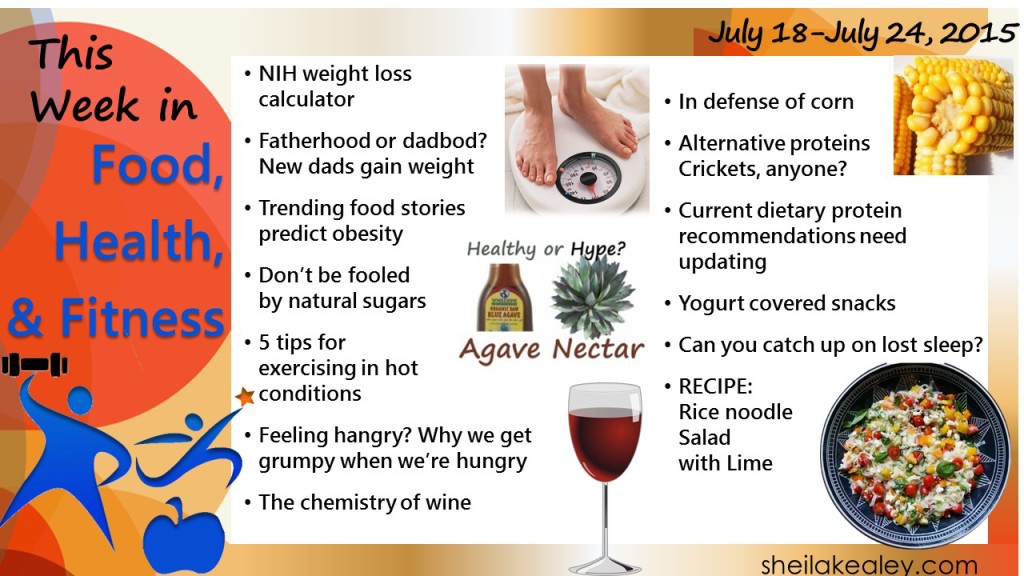This week, read about how Finns make activity part of their lives, bulletproof bull, how climbing trees and dynamic balance activities boost memory, a high-intensity interval routine that is fun, the truth about stretching, eating like a Kenyan runner, making your own energy bars, and more.
How Finns make activity part of everyday life. A growing body of research shows that our environment influences how much we move – for example, if you live near cycling and walking paths, you’ll likely walk or cycle more; or you’ll be more active if your workplace encourages and allows time for physical activity. This type of support and infrastructure costs money, but the benefits of better health are huge, and not only on a personal level. This week NPR Health showcases Finland as an example of a nation where physical health is a priority. Walking paths and bike paths are everywhere; 90% of employers support physical activity in some way: they recognize that physically active people save the health care system money, and healthy employees work better and don’t take as many sick days. (NPR Health)

Something the article didn’t highlight is how Finns are leaders at active transportation. This is something my XC Ottawa teammate Karl Saidla has explored. Even in a city with winter, people get to where they need to go by foot, bike, or use public transit. Overall, 77% of commuters use some form of active transit. For comparison, in Ottawa where I live, only 28% of residents use active transportation for commuting. This isn’t something that people “just do.” As the article highlighted, workplaces, communities, and governments need to play an active role.
 More bull. . . from bulletproof. From the makers of Bulletproof Coffee (read about it here), entrepreneur, blogger, and paleo proponent Dave Asprey brings us “Fatwater” (supposedly more hydrating that water. . . ). Dietitian and myth debunker Diana Chard looks at Asprey’s ridiculous claims for fatwater, and also delves into another paleo/bulletproof misconception that beans and legumes are unhealthy. (Diana Chard, Bite My Words)
More bull. . . from bulletproof. From the makers of Bulletproof Coffee (read about it here), entrepreneur, blogger, and paleo proponent Dave Asprey brings us “Fatwater” (supposedly more hydrating that water. . . ). Dietitian and myth debunker Diana Chard looks at Asprey’s ridiculous claims for fatwater, and also delves into another paleo/bulletproof misconception that beans and legumes are unhealthy. (Diana Chard, Bite My Words)
 Climbing a tree and dynamic balance can improve cognitive skills. Do you want to improve your memory? Practice some dynamic balance exercises, or climb a tree! Researchers in the Department of Psychology at the University of North Florida found that short sessions of proprioceptive dynamic activities, like climbing a tree, can dramatically improve working memory (working memory, the active processing of information, is linked to performance in a wide variety of contexts from grades to sports). The research suggests that just a couple of hours of these physical exercises improves working memory dramatically.
Climbing a tree and dynamic balance can improve cognitive skills. Do you want to improve your memory? Practice some dynamic balance exercises, or climb a tree! Researchers in the Department of Psychology at the University of North Florida found that short sessions of proprioceptive dynamic activities, like climbing a tree, can dramatically improve working memory (working memory, the active processing of information, is linked to performance in a wide variety of contexts from grades to sports). The research suggests that just a couple of hours of these physical exercises improves working memory dramatically.
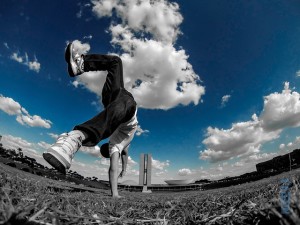 The study activities were unpredictable, requiring participants to consciously adapt their movements, and included climbing trees, walking and crawling on a 3-inch wide beam, moving while paying attention to posture, running barefoot, navigating over, under and around obstacles, as well as lifting and carrying awkwardly weighted objects. Yoga-type balance (usually static) didn’t have any memory boosting benefit. Not a bad argument for breaking up your work or school with a bit of parkour-type activities . . . (Percept Mot Skills. 2015 Jun).
The study activities were unpredictable, requiring participants to consciously adapt their movements, and included climbing trees, walking and crawling on a 3-inch wide beam, moving while paying attention to posture, running barefoot, navigating over, under and around obstacles, as well as lifting and carrying awkwardly weighted objects. Yoga-type balance (usually static) didn’t have any memory boosting benefit. Not a bad argument for breaking up your work or school with a bit of parkour-type activities . . . (Percept Mot Skills. 2015 Jun).
High intensity exercise has many benefits, but will people do it? Exercising at a higher intensity produces much greater health benefits than low intensity exercise in a lot less time. One issue is promoting such a routine. This week Gretchen Reynolds looks at research by Danish scientists that reveals a high intensity exercise program can be fun and produce health and performance benefits (after 8 weeks, runners following the 10-20-30 program vs regular training reduced their 5k times by an average of 38 seconds, and lowered their blood pressure and improved other health markers).
Here’s how you do it:
- 30-seconds relaxed pace
- 20 seconds moderately hard
- 10 seconds all out
Repeat 5 times. If you’re in good shape and an experienced athlete, you can do one or two more sets. This routine is geared towards recreational athletes, but I’ve tried it and vouch that it is fun! I incorporate the 30-20-10 second program into my training for variety, when I can’t wrap my head or body around all out intervals, or when I’m doing an activity I haven’t done in awhile as an introduction to speed work – it is fun! (Gretchen Reynolds, New York Times)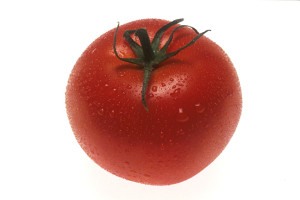
5 foods that taste better now than they will all year. Time highlights tomatoes, melons, grapes, okra, and pluots (plums) – but you’ll find many more in August – just shop your local market! (Time)
 This is why you’re a total sucker for sweets. There’s a reason the bakery chain Cinnabon places ovens near the front of its bakeries, allowing the aroma of warm cinnamon rolls to lure customers indoors. And the company intentionally locates bakeries in airports and small malls, where scents can linger. They have figured out that aromas improve purchases (ovens at the back of the store had lower sales).
This is why you’re a total sucker for sweets. There’s a reason the bakery chain Cinnabon places ovens near the front of its bakeries, allowing the aroma of warm cinnamon rolls to lure customers indoors. And the company intentionally locates bakeries in airports and small malls, where scents can linger. They have figured out that aromas improve purchases (ovens at the back of the store had lower sales).
New research supports this practice, suggesting that aromas can influence our eating behavior: a study published in the journal appetite showed that smelling something delicious steers people towards sweet and fatty food. Researchers explored this phenomenon with the scent of chocolate croissants (pain au chocolat), and found that participants who smelled this delicious food were more likely to choose a high calorie dessert energy dense foods than those who didn’t. (Time, reporting on Appetite)
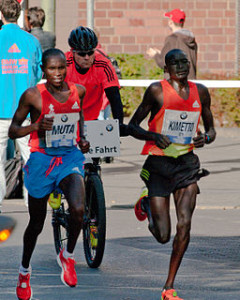 Eat like a Kenyan, run like a Kenyan. Matt Fitzgerald experiences & explains the benefits of the Kenyan diet.
Eat like a Kenyan, run like a Kenyan. Matt Fitzgerald experiences & explains the benefits of the Kenyan diet.
- Eat fresh, local, unprocessed foods
- Eat a starch with every meal
- Eat meat infrequently
- Eat snacks and dessert…of fruit
- Do some runs on an empty stomach
Some good advice – whether you’re a runner or not! (Matt Fitzgerald, Competitor Magazine)
The Truth About Stretching: When It Helps and When It Doesn’t. Stretching isn’t always a good thing to do. Beth Skwarecki presents some good evidence-based advice about when you should (or shouldn’t) stretch. (Beth Skwarecki, Lifehacker.com)
Make Your Own Energy Bars
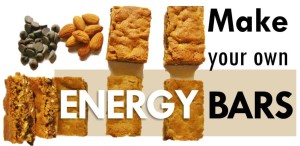 Energy bars are popular with many athletes because they are a quick and convenient source of calories that are easy to eat during workouts or as a handy snack. Commercial energy bars are convenient, but they can be expensive and don’t always taste that great. It’s not hard to make your own! You’ll be rewarded by some great treats to look forward to during your workout. Bake a batch and freeze, so that you have a good supply on hand. You don’t need to go looking for fancy powders or ingredients to make your bars.
Energy bars are popular with many athletes because they are a quick and convenient source of calories that are easy to eat during workouts or as a handy snack. Commercial energy bars are convenient, but they can be expensive and don’t always taste that great. It’s not hard to make your own! You’ll be rewarded by some great treats to look forward to during your workout. Bake a batch and freeze, so that you have a good supply on hand. You don’t need to go looking for fancy powders or ingredients to make your bars.
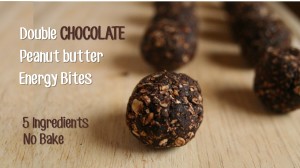 Here are some recipes with easy-to-find, basic ingredients:
Here are some recipes with easy-to-find, basic ingredients:
- Double Chocolate Peanut Butter Energy Bites
- Sheila’s Quick & Easy Oatmeal Bars
- Almond Butter Chocolate Chip Bars
- Sesame Date Energy Bites
Last Week in Food, Health, and Fitness
___________
Kenyan Runners by Dirk Ingo Franke (Own work) [CC BY 3.0], via Wikimedia Commons
Share This:
